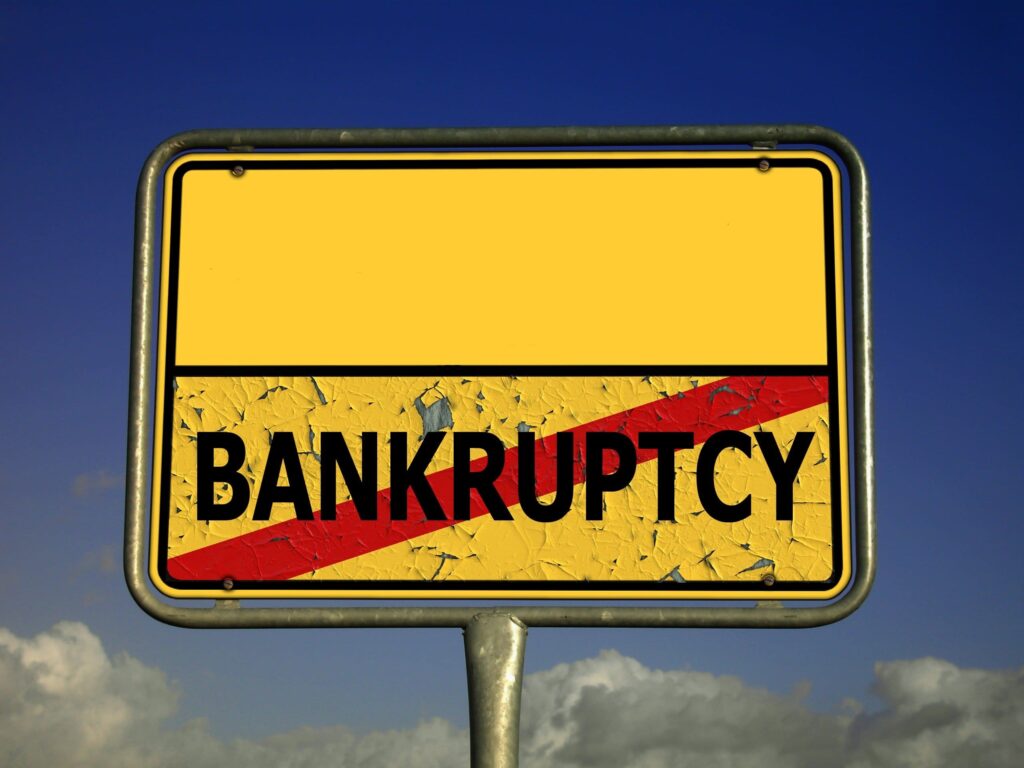How Sam Bankman-Fried Fooled the World: A Biography of the FTX Mastermind

Introduction
Why the world trusted SBF
Sam Bankman-Fried. Just hearing the name brings a mix of awe and outrage. At one point, he was hailed as the next Warren Buffett of crypto—a genius with a mission to do good, make money, and save the world. He donated millions to political causes, rubbed shoulders with lawmakers, and built one of the biggest crypto empires in history. But beneath that mop of messy hair and those lazy board shorts was a complicated—and ultimately dangerous—truth.
The rise and shocking fall of a crypto mogul
From an MIT grad to the billionaire founder of FTX, SBF’s story had all the makings of a tech fairy tale. Until it didn’t. His crypto exchange, once valued at $32 billion, collapsed like a house of cards—leaving behind billions in customer losses, shattered trust, and one of the biggest fraud cases in financial history. So how did a nerdy altruist become the face of deception?
Let’s break it down.
Early Life and Education

Born into brilliance: The academic roots of Sam Bankman-Fried
Sam was born in 1992 to two Stanford Law School professors—Barbara Fried and Joseph Bankman. Growing up in a household of intellect, ethics, and debate, Sam was encouraged to think critically and dream big. He wasn’t your average kid. While others were into video games or sports, Sam was busy dissecting philosophy and reading math textbooks for fun.
Influences from MIT and effective altruism
After high school, Sam attended MIT where he majored in physics and minored in math. But more than equations, it was an idea that stuck with him—Effective Altruism. This philosophy promotes earning money not for luxury, but to donate to causes that do the most good. It became his moral compass—or at least, that’s how he sold it.
The nerdy, awkward, genius archetype
Sam wasn’t flashy. He wasn’t trying to be Elon Musk. Instead, he leaned into the awkward, math-obsessed persona. He wore wrinkled T-shirts, rarely combed his hair, and looked like someone who had more important things to do than impress anyone. And oddly, that worked in his favor. People trusted the image. The “genius hacker saving the world” vibe? It stuck.
The Road to Crypto Stardom

Starting out at Jane Street Capital

After graduating, Sam joined Jane Street Capital, a high-frequency trading firm known for its math-heavy, cutthroat culture. There, he learned to thrive in fast-paced markets and developed an edge that would later define his approach to crypto—quick moves, big bets, and ruthless efficiency.
The arbitrage opportunity: Korea’s “Kimchi Premium”
In 2017, Sam spotted something strange. Bitcoin was trading at higher prices in Korea compared to the U.S.—sometimes by 10-15%. This gap, known as the Kimchi Premium, was an arbitrage goldmine. By buying in one market and selling in another, Sam was reportedly making up to $1 million a day. That’s when he founded Alameda Research to capitalize on these inefficiencies.
Founding Alameda Research
Alameda wasn’t just another hedge fund—it was SBF’s secret weapon. Aggressive, nimble, and risk-tolerant, Alameda became the financial engine behind his empire. But it also blurred the lines between personal ambition and customer funds—a theme that would haunt him later.
The Birth of FTX

Official Website – FTX
Why SBF wanted a better exchange
Sam grew frustrated with the state of crypto trading. The exchanges were clunky, slow, and lacked features for serious traders. So, in 2019, he launched FTX, with a promise to be smarter, faster, and more trustworthy than anything else in crypto. And at first, it was.
The early success and rapid expansion
FTX grew like wildfire. It offered innovative products—like tokenized stocks, leveraged tokens, and futures contracts. Traders loved it. Institutional money poured in. Within two years, FTX was valued in the tens of billions. Everyone from venture capitalists to everyday investors wanted in.
FTX’s branding masterstroke: FTX Arena, Super Bowl ads, and celebrity endorsements
SBF didn’t stop at crypto circles. He went mainstream. FTX bought the naming rights to the Miami Heat’s arena, ran flashy Super Bowl ads, and partnered with Tom Brady, Steph Curry, and Larry David. It was a genius move—build trust by associating with the familiar. But behind the scenes, things were already starting to unravel.
The Cult of SBF
Messy hair, cargo shorts, and genius PR
Sam’s look became iconic. Disheveled, unbothered, focused on “bigger things.” It wasn’t just style—it was branding. His down-to-earth vibe made him seem honest, grounded. He played video games during interviews, tweeted like a college kid, and said he was giving away his fortune. The media ate it up.
Media darling and political connections
He gave interviews to every major outlet—Forbes, Bloomberg, The New York Times. He spoke at crypto events, was featured in documentaries, and was a guest on high-profile podcasts. But perhaps most critically, he became a major political donor—contributing over $70 million to candidates and causes. That bought him influence. Or at least, less scrutiny.
Donations and influence in Washington
Behind closed doors, SBF was lobbying for crypto regulations that would favor FTX. He built relationships with lawmakers, donated to campaigns (sometimes using dark money), and pitched himself as a responsible face of crypto. It worked—until it didn’t.
Cracks Beneath the Surface
Questionable balance sheets at Alameda
In late 2022, CoinDesk published a report exposing how Alameda’s balance sheet was propped up by FTT—a token issued by FTX. This raised red flags. If Alameda’s value depended heavily on a token created by a sister company, wasn’t that circular reasoning? Or worse—fraud?
Unusual accounting practices at FTX
More digging revealed that customer funds were being quietly transferred from FTX to Alameda. Billions of dollars were unaccounted for. No proper board, no oversight, no CFO. It was a “corporate governance nightmare,” according to FTX’s new CEO after the collapse.
The whistleblowers and red flags ignored
Insiders had warned about irregularities, but few paid attention. Why? Because SBF had built a fortress of trust. Regulators were hesitant, investors were starstruck, and users believed the hype. Until the illusion shattered.
👉 Michael Saylor’s Net Worth in Bitcoin: How Much BTC Does He Own?
The Fall of a Titan
Binance pulls out, panic sets in
It all started with a tweet from Binance CEO Changpeng Zhao (CZ), who said he was selling his FTT holdings. That spooked the market. Users began withdrawing funds. FTX couldn’t keep up. Within 48 hours, it was clear—they didn’t have the money.
FTX declares bankruptcy

On November 11, 2022, FTX filed for Chapter 11 bankruptcy. Sam resigned. In court documents, it was revealed that as much as $10 billion of customer funds were missing. The crypto world went into shock.
The shocking revelations in court
FTX had used customer deposits to fund risky bets through Alameda. There were secret backdoors in the code, luxury purchases disguised as company expenses, and absolutely no record-keeping. It wasn’t just bad management—it looked like fraud.
Life After the Collapse
Arrest, trial, and the courtroom drama
Sam was arrested in the Bahamas and extradited to the U.S. Prosecutors charged him with wire fraud, securities fraud, and money laundering. His bail was set at $250 million—the highest in history. His trial became the crypto version of Enron meets Theranos.
SBF’s public defense: What he said vs. what we know
Even after the collapse, Sam claimed he “didn’t knowingly commit fraud.” He went on a media apology tour. But his own messages, emails, and witness testimonies told a different story. It wasn’t naivety—it was deception.
The fallout: Customers, employees, and regulators
Thousands of users lost their life savings. Employees were blindsided. Regulators faced backlash for failing to act sooner. FTX’s implosion triggered a domino effect, causing other firms to collapse and pushing crypto into a winter it still hasn’t recovered from.
Inside SBF’s World: Lifestyle of a Crypto Billionaire
The Bahamas penthouse and “effective altruist” lifestyle
Despite preaching minimalist values and altruism, Sam lived with a dozen close friends and executives in a $30 million luxury penthouse in the Bahamas. It was the kind of place you’d see in a Netflix series—ocean views, private chefs, personal security. FTX staff described a frat-house vibe with round-the-clock work, polyamorous relationships, and Adderall-fueled strategy sessions.
To the public, he remained the humble billionaire who drove a Corolla and donated to malaria research. But behind the scenes, he was writing off luxury property and private jets as company expenses. It was a life full of contradictions—where selflessness and self-indulgence blurred.
The inner circle: Caroline Ellison and others
Sam’s closest ally? Caroline Ellison, the CEO of Alameda Research and his on-again, off-again romantic partner. She was just as math-savvy and ideologically driven as he was. Others in his inner circle were also MIT grads or Jane Street alumni—people who bought into the effective altruism mission.
But loyalty ran deep. Many of them ignored or overlooked questionable practices. And when it all fell apart, several—including Caroline—flipped, cooperating with authorities and testifying against Sam.
The Ripple Effect on Crypto
Trust crisis in the industry
FTX wasn’t just another company—it was a cornerstone of the crypto ecosystem. When it crumbled, the shockwave was massive. Suddenly, users were asking: “Is my crypto safe anywhere?” Trust eroded overnight.
Other exchanges rushed to publish proof-of-reserve reports. Investors pulled billions out of centralized platforms. Regulators ramped up enforcement. The message was clear: no one is too big—or too beloved—to fail.
Other casualties: BlockFi, Genesis, and more
FTX’s collapse triggered a domino effect. Lending platform BlockFi filed for bankruptcy. Genesis, a major institutional lender, halted withdrawals. The crypto lending market—once booming—collapsed almost entirely. Billions in customer funds were frozen or lost.
It wasn’t just financial pain. The psychological impact was deep. Retail investors felt betrayed. Builders became jaded. And policymakers—who had once considered crypto a rising innovation—started framing it as a systemic risk.
How Did SBF Fool Everyone?
The power of narrative and “tech savior” bias
Part of Sam’s magic was that he told a great story. A quirky genius who wanted to earn billions just to give it all away? That narrative is irresistible. It taps into Silicon Valley’s obsession with visionaries who break the rules for a greater good.
The media, investors, and even regulators wanted to believe him. He said the right things. He built trust not just through performance—but through identity. And that, ultimately, is what made the deception so effective.
Red flags everyone missed—or ignored
- No board of directors at FTX.
- No CFO or compliance head.
- Audits? Largely absent.
- Alameda and FTX? Inappropriately entangled.
- Millions in political donations? Often undisclosed.
These were glaring issues. But when someone is making everyone rich, people look the other way.
Lessons from the FTX Collapse
Transparency matters—more than hype
If there’s one lesson the crypto world needs to learn, it’s that transparency isn’t optional. No matter how charming a founder is or how fast a company grows, if there’s no accountability, it’s just a ticking time bomb.
The dangers of hero worship in tech
Sam wasn’t the first tech icon to fall from grace—and he won’t be the last. The problem isn’t just one bad actor. It’s an entire ecosystem that elevates young founders to mythical status, then looks the other way as they break rules in the name of innovation.
Regulation is coming—like it or not
If 2022 was the year of collapse, 2023 and beyond is the era of regulation. Governments across the world are tightening rules, requiring proof-of-reserves, limiting leverage, and demanding clearer disclosures. The Wild West is closing.
Conclusion: The Legacy of Sam Bankman-Fried
Sam Bankman-Fried started with a mission to do good. Whether that mission was ever genuine is still up for debate. But what’s undeniable is the damage left in his wake: broken trust, financial ruin, and a crypto industry forced to grow up fast.
He was brilliant. He was bold. But he was also reckless, deceptive, and—by many accounts—a fraud. His story will be told for decades as a warning: genius without ethics is dangerous.
FAQs
Who is Sam Bankman-Fried?
Sam Bankman-Fried is the former CEO of FTX, a now-bankrupt cryptocurrency exchange. Once hailed as a crypto prodigy, he is now facing criminal charges for fraud and misuse of customer funds.
What happened to FTX?
FTX collapsed in November 2022 after it was revealed that the company had misused billions in customer deposits, mainly to fund risky trades by its sister firm, Alameda Research.
Is Sam Bankman-Fried in jail?
As of 2025, Sam Bankman-Fried has been convicted on multiple counts of fraud. He is awaiting sentencing and could face decades in prison.
What did Caroline Ellison do?
Caroline Ellison, the CEO of Alameda Research, admitted to participating in the misuse of funds and testified against SBF in court. She took a plea deal with prosecutors.
What can we learn from the FTX scandal?
The key takeaways include the importance of transparency, the risks of centralized platforms, and the dangers of trusting a single personality without proper oversight.
Please don’t forget to leave a review.

2 Comments